Meet the Animals
Discover the Intricate Ecosystems of the Ocean
Educational, Entertaining, and Refreshing; Take a Break From Your Routine and spend the day observing the extraordinary behavior of our striking marine life at our Marathon aquarium.
You'll Meet The Nicest Fish at Florida Keys Aquarium Encounters
Browse a few of the marine species you will have a chance to interact with at our Park!
Coral Reef Tank
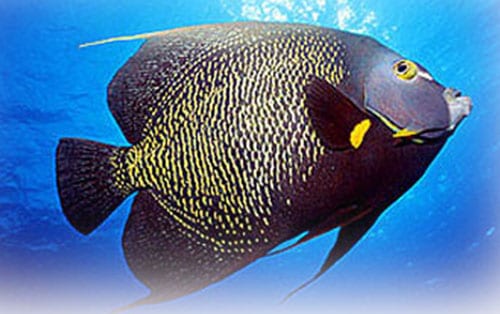
French Angelfish (Pomacanthus paru)
- French Angelfish are flat, oval shaped fish with a large trailing dorsal and anal fin. They are dark colored with bright yellow edged scales and yellow on their pectoral fins and around their eyes.
- Habitat: Found on reefs and depths of less than 15 ft in the Caribbean from Florida to Brazil.
- Diet: Algae and invertebrates. Juveniles will eat ectoparasites off of other fishes.
- DID YOU KNOW? French Angelfish are very hardy, long-lived, and disease-resistant species making them ideal for aquariums.
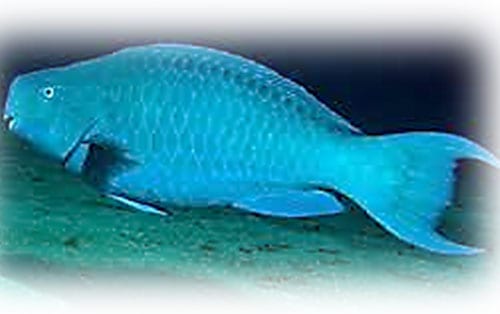
Blue Parrotfish (Scarus coeruleus)
- Blue Parrotfish have large, blue scales and develop a protruding snout at adult size, 30 inches+, and extended upper and lower caudal (tail) fin lobes. They have beak-like with fused teeth.
- Habitat: Found in the Western Atlantic and Gulf of Mexico. Also found throughout the West Indies.
- Diet: Feed on algae on rocks and coral reefs.
- DID YOU KNOW? Blue Parrotfish use their teeth to grind rocks into sand, which is ingested and then defecated, creating new sand in the process.
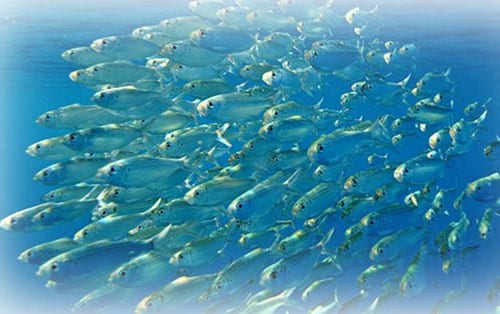
Pilchards (Harengula humeralis) & (Harengula clupeola)
- 2 species of Pilchards in our Coral Reef Tank: Harengula humeralis, commonly called Sandy Key Pilchard or Redear Sardine, has a reddish spot near the opercle (top bone of the gill cover). Harengula clupeola, called the False Herring, has a pale yellow or orange spot near the opercle.
- Habitat: Nearshore coastal waters in the Caribbean, Western Atlantic, and Gulf of Mexico.
- Diet: Plant and algal material and larvae of shrimp, crabs, and stomatopods.
- DID YOU KNOW? There are over 20 species of Pilchards.
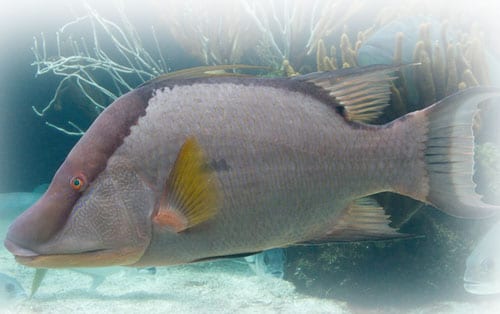
Hogfish (Lachnolaimus maximus)
- Hogfish are easily identified by their hog-like snout. Their body is unusually flat and oval shaped with red irises and colors that change throughout their lives.
- Habitat: Found in the western Atlantic Ocean over open bottoms and coral reefs.
- Diet: Feed mainly on mollusks, but will also eat hermit crabs, amphipods, and sea urchins.
- DID YOU KNOW? The Florida State record Hogfish was caught in Daytona Beach at 19 pounds 8 ounces!
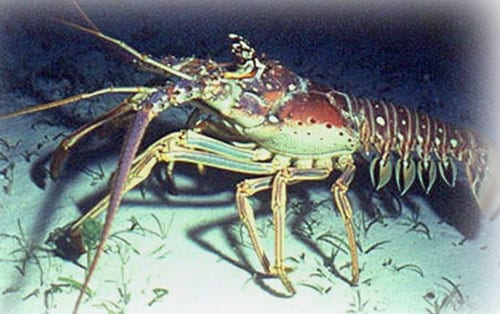
Florida Spiny Lobster (Panulirus argus)
- Florida Spiny Lobsters have forward-pointing spines that cover their bodies to protect them from predators. They have long antennas and vary in color with 2 large light spots on the 2nd segment of the tail making them easy to identify.
- Habitat: Tropical and subtropical waters, found in crevices and caverns of reefs and the Florida Bay.
- Diet: Feed on snails, clams, crabs, and urchins.
- DID YOU KNOW? The lobster fishery is the largest commercial fishery in the FL Keys, with 5-6 million lbs caught each year.
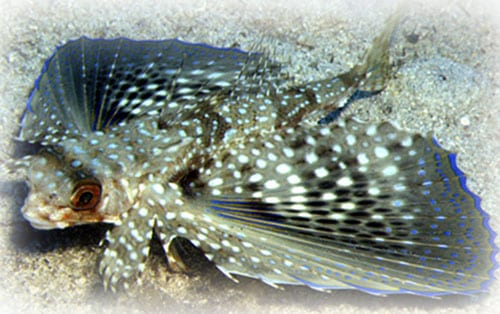
Flying Gurnard (Dactylopterus volitans)
- Flying Gurnards are easily identified by their large, fan-like pectoral (side) fins, which often have bright or iridescent markings.
- Habitat: Prefer sand, coral rubble, and seagrass, typically found near fringe or patch reefs.
- Diet: Crabs, shrimp, clams, oysters, and other small fish.
- DID YOU KNOW? Flying Gurnards are not actually flying fish, they use their fins to appear larger to predators.
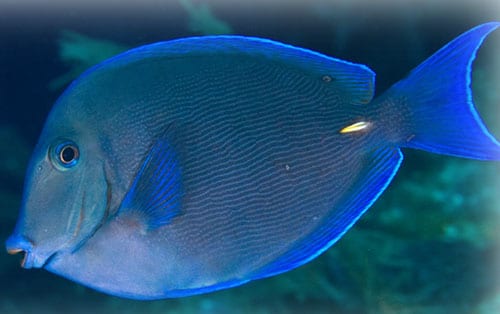
Blue Tang (Acanthurus coeruleus)
- Blue Tangs go through 3 color phases in their lives. Juveniles are bright yellow, changing to a powder blue and then dark blue or purple. Maturity is not based on size, juveniles can be larger than adults.
- Habitat: Found in shallow reef tops, and inshore grassy or rocky areas in Florida, Caribbean, and Gulf of Mexico.
- Diet: Feed on algae.
- DID YOU KNOW? Also called Surgeonfish because of the knife-like spine on either side of the tail.
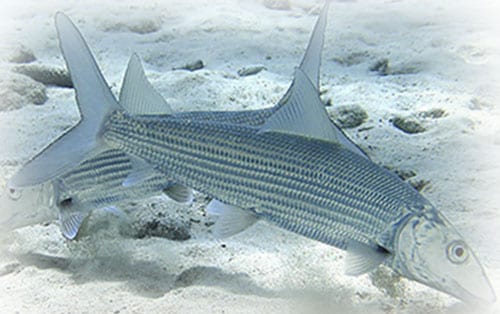
Bonefish (Albula vulpes)
- Bonefish are named for the many fine bones in their bodies. They appear dark blue-green from the surface with silver sides streaked with dark grey.
- Habitat: Coastal areas such as intertidal flats and mangrove forests, and can survive in oxygen-poor water by inhaling air from the surface.
- Diet: Usually Bonefish enjoy small crabs, shrimp, clams, and fishes.
- DID YOU KNOW? Anglers spend more than $150 million a year fishing for Bonefish in the FL Keys.
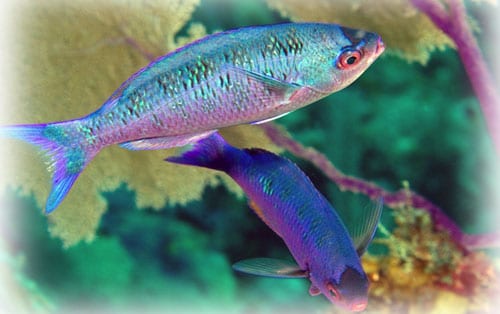
Creole Wrasse (Clepticus parrae)
- Creole Wrasse have an elongated body that is dark purple or violet in color. They are a relatively small fish getting up to 30 cm in length.
- Habitat: Prefer deep outer reefs, edges of drop-offs, down to 40 meters. Abundant in the Caribbean.
- Diet: Plankton, small jellyfish, invertebrate larvae.
- DID YOU KNOW? Creole Wrasses spend most of their lives high in the water column to feed.
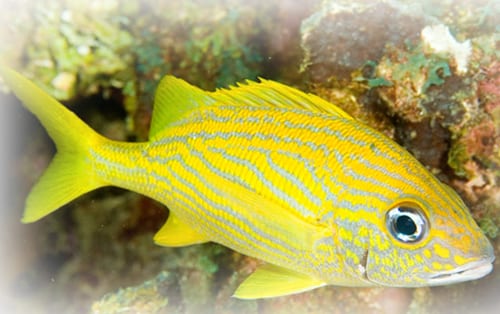
French Grunt (Haemulon flavolineatum)
- French Grunts are named because of the noise they make when grinding their teeth. They are silvery white with yellow stripes running along their bodies.
- Habitat: Found in large schools, over rocky substrate, coral reefs, or under ledges in the Western Atlantic and Gulf of Mexico.
- Diet: Feed on small crustaceans, polychaetes, and mollusks.
- DID YOU KNOW? French Grunts can grow up to 12 inches long, although most are half that size.
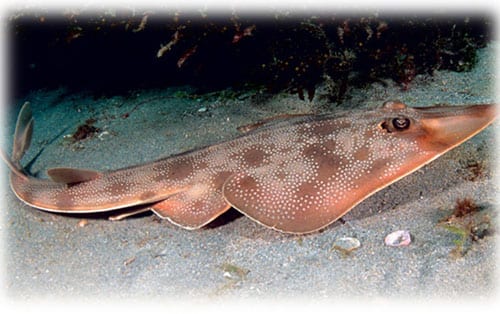
Atlantic Guitarfish (Rhinobatos lentiginosus)
- Guitarfish are very similar to both sharks and rays. Their flat bodies are similar to skates or rays, and their tails have two dorsal fins, like most sharks.
- Habitat: Shallow coastal waters over sandy or muddy bottoms in the western Atlantic; spotted in freshwater estuaries and even in waters 100ft deep!
- Diet: Small crustaceans and shellfish.
- DID YOU KNOW? Atlantic Guitarfish bear live young, with up to 6 in a litter.
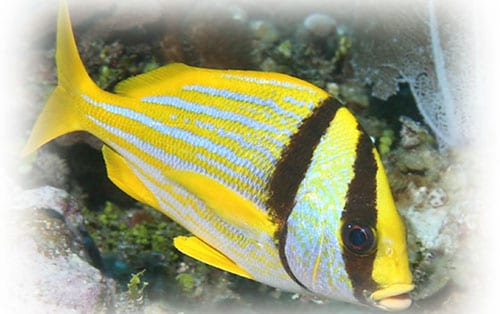
Porkfish (Anisotremus virginicus)
- Porkfish are a species of grunt with thin yellow and silver stripes across their body, with two distinctive black bars—one over their eyes, the other near their pectoral fins.
- Habitat: Found in large schools in the Western Atlantic from Florida to Southern Brazil.
- Diet: Small mollusks, echinoderms (sea stars, sea cucumbers, etc.), crustaceans, and marine worms.
- DID YOU KNOW? Juvenile Porkfish are “cleaner fish”—their main diet is parasites that they pick from the scales of other species of fish.
Predator Reef Tank
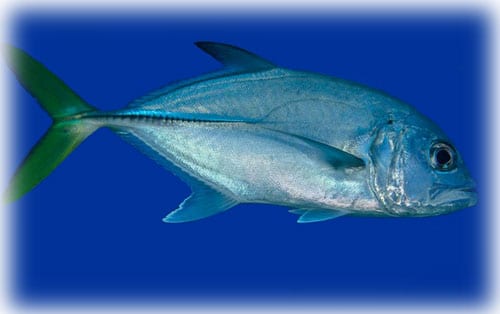
Horse Eye Jack (Caranx latus)
- Horse Eye Jacks have a distinctive large eye, a bright yellow tailfin, and dark, nearly black scutes or bony plates. They usually travel in schools.
- Habitat: Swim in open waters over reefs, common to the coastal waters of the Americas.
- Diet: Feed on small fishes, shrimp and other invertebrates.
- DID YOU KNOW? Horse Eye Jacks have also been found in brackish water and freshwater coastal rivers and streams.
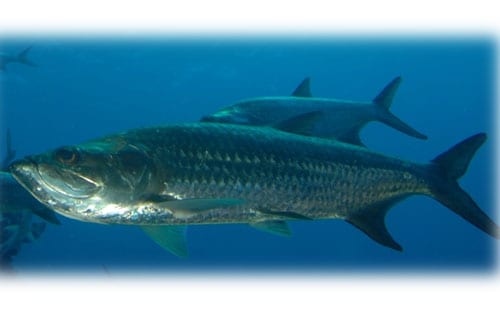
Tarpon (Megalops atlanticus)
- Tarpon breathe with gills, like most fish, but can also gulp air at the surface for short bursts of energy. This gulping action is called “rolling,” and makes the Tarpon easier to spot for sport fisherman.
- Habitat: They are an inshore fish that can live in a very wide salinity range.
- Diet: Tarpon swallow their food whole, and like to eat shrimp, pilchards, and small swimming crabs.
- DID YOU KNOW? The largest Tarpon caught in Florida was near Key West and weighed 243 pounds!
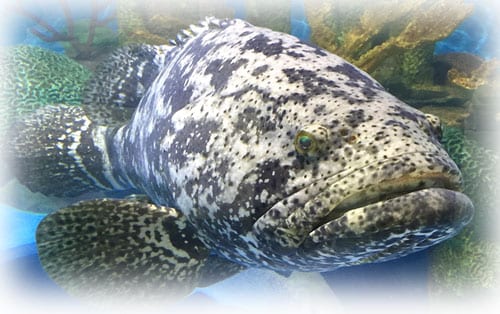
Goliath Grouper (Epinephelus itajara)
- Black Groupers have olive, grey, or brown bodies and irregular bronze-colored blotches and spots. They have several sets of teeth to prevent fish from escaping while feeding.
- Habitat:Western Atlantic Ocean along the coastfrom Massachusetts to Brazil.
- Diet: Adults eat fish and juvenile black groupers eat crustaceans.
- DID YOU KNOW?All Black Groupers are born female and some transform into male when they are large enough.
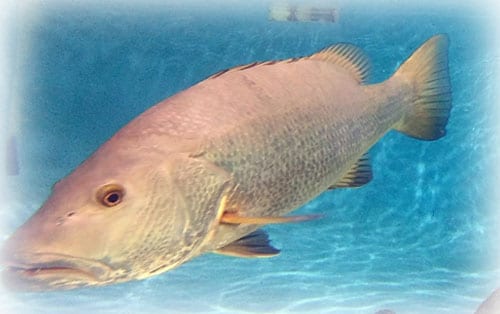
Cubera Snapper (Lutjanus cyanopterus)
- Cubera Snapper are dark brown or grey in color and are the largest of the snapper family. They have a pair of canines that are enlarged and visible when their mouth is closed.
- Habitat: Commonly found nearshore in wrecks, reefs, and ledges in tropical waters.
- Diet: Fish and large crustaceans including lobsters and crabs.
- DID YOU KNOW? The largest recorded Cubera Snapper was 126 pounds.
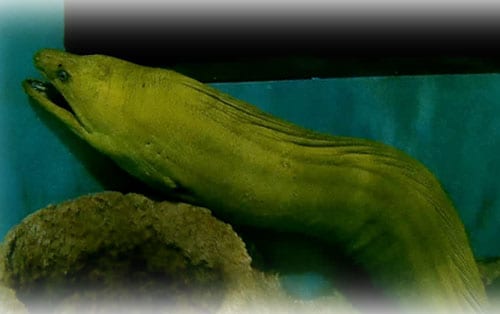
Moray Eel (Gymnothorax funebris)
- Green Moray Eels are actually bluish/brown in color! The yellow mucus that covers its body is what gives them the green color. They have a single dorsal fin that runs on the top of the body and is fused with the caudal and anal fins.
- Habitat: Can be found in the western Atlantic Ocean and Gulf of Mexico.
- Diet: Feed mostly at night on fish, crab, octopus, and squid.
- DID YOU KNOW? The largest recorded Green Moray Eel was 8 feet long and 65 pounds! (Ours are 6ft+ and 45-50lbs)
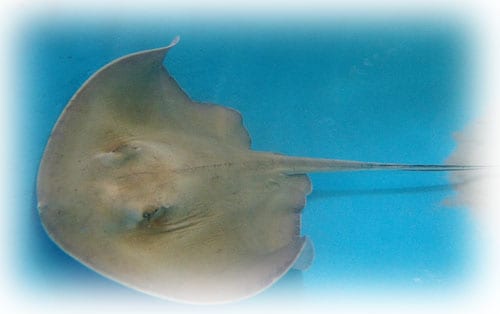
Southern Ray (Dasyatis americana)
- Southern Stingrays are diamond-shaped, and olive-brown to green-grey in color.
- Habitat: Shallow, warm coastal waters with sandy bottoms
- Diet: They feed constantly, day and night. Their prey includes teleosts and crustaceans, stomatopods, mollusks, and annelids. They use electro-reception to find their food in the sand.
- DID YOU KNOW? Southern Stingrays can reach up to 214 pounds and have over a 6ft wingspan!
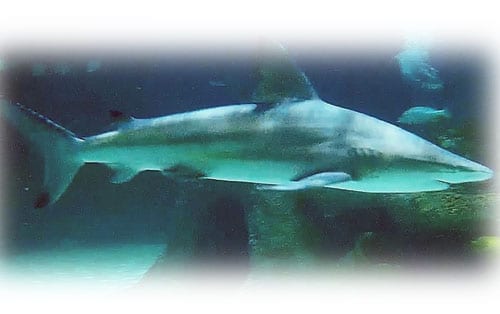
Black Tip Shark (Carcharhinus limbatus)
- Blacktip Sharks have a more elongated body and predominant black markings on the tips of their fins. 2nd largest shark in our Predator Reef Tank.
- Habitat: Shallow coastal waters. They use shallow waters from South Carolina to Texas as a nursery for their pups in the spring and summer.
- Diet: Small fish, they have few natural predators.
- DID YOU KNOW? Blacktip Sharks are one of the most common sharks found inshore off the coast of Florida and are attributed to the majority of shark bites in the region!
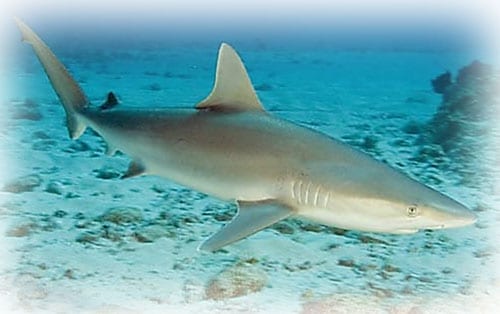
Blacknose Shark (Carcharhinus acronotus)
- Blacknose Sharks have a stocky body with smaller fins and a dark "smudge" mark on the tip of their nose, giving them a distinct appearance. 3rd smallest shark in our Predator Reef Tank.
- Habitat: Nearshore coastal and temperate waters of the Western Atlantic and Gulf of Mexico.
- Diet: Being a quick swimmer, these sharks feed primarily on small fish.
- DID YOU KNOW? Mature Blacknose Sharks grow up to 4-5 feet long!
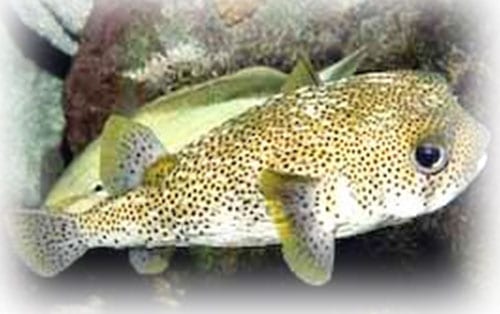
Porcupine Pufferfish (Diodon hystrix)
- Porcupine Puffer fish have small dark spots, and spines that lay flat over their entire body. They have the ability to extend their spines and inflate their bodies to almost twice their size when scared or threatened.
- Habitat: Found in tropical waters worldwide. Typically found in shallow waters to 100 feet.
- Diet: They eat crustaceans, squid and clams. They crush shells of shellfish with their front teeth.
- DID YOU KNOW? Some species of puffer fish are very poisonous but some cultures risk eating them anyways!
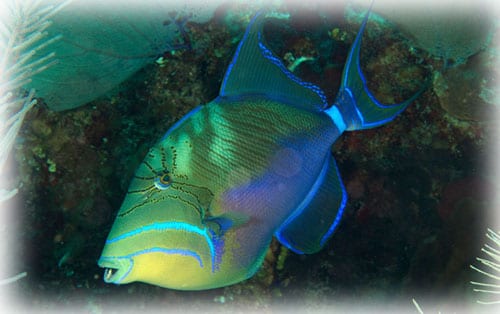
Queen Trigger (Balistes vetula)
- Queen Triggerfish are triangularly shaped and are mostly yellow and green with a pattern of lines circling their eyes. Their fins are bluish purple and their tail is forked.
- Habitat: Found on reefs throughout the Caribbean.
- Diet: They feed on krill, squid, clams, small fish, and hard shelled shrimp to wear down their teeth.
- DID YOU KNOW? Queen Triggerfish teeth never stop growing!
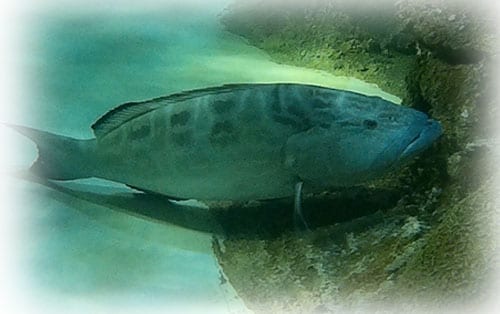
Black Grouper (Mycteroperca bonaci)
- One of the best known species of the large group of perciform fish called groupers.
- Other names include black rockfish, bonaeci arara, and marbled rockfish.
- They have an olive or gray body, with black blotches and brassy spots.
- Normally found in the western Atlantic Ocean, from Massachusetts in the north to southern Brazil, but is particularly associated with the southern Gulf of Mexico, the Florida Keys, the Bahamas and the Caribbean.
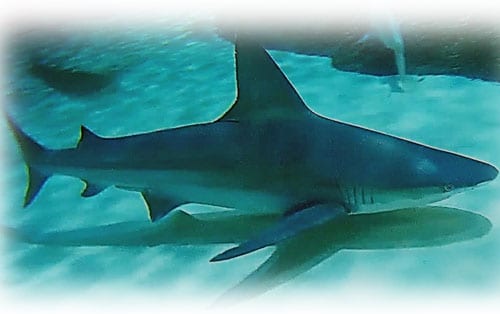
Sandbar Shark (Carcharhinus plumbeus)
- Sandbar Sharks are recognized by their large dorsal fin, large pectoral fins, and mid-dorsal ridge. They are grayish brown in color and are the largest shark in our Predator Reef Tank.
- Habitat:Nearshore in the NE USA and outer reef in the FL Keys. In the Atlantic they range from NewEngland to Brazil.
- Diet: They feed on small, bony fish and also smaller sharks such as Sharpnose Sharks.
- DID YOU KNOW? Sandbar Sharks average 16-20 inches at birth and can reach 8 feet at maturity!
